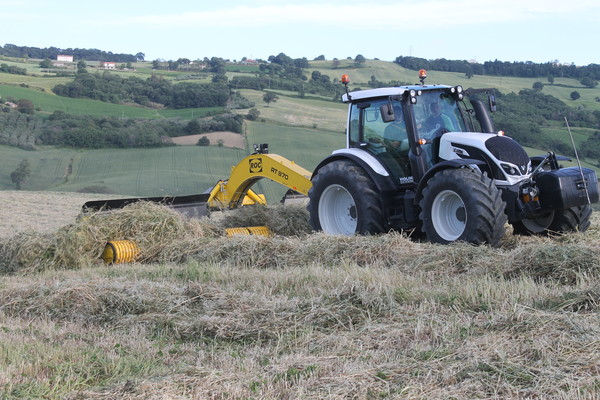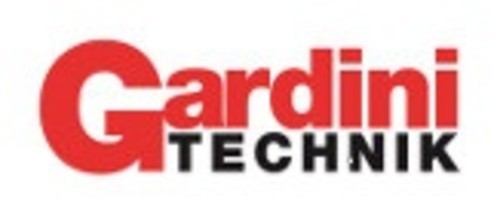
Quality and productivity in haymaking using proper mechanization
Timely intervention and the need to reduce losses and preserve forage from pollution with soil or other unwanted materials have driven manufacturers to develop highly productive haymaking machinery equipped with interesting technological solutions
Traditional haymaking is carried out through several operations: mowing, turning, windrowing and baling. Depending on forage characteristics and environmental conditions, turning and windrowing can be repeated several times. Besides maximizing production, which is also to be achieved by reducing field losses, it is essential to preserve the quality of the product, which inevitably tends to decline after mowing.
The main criteria to be kept in mind for effective haymaking are the processing speed and the carefulness with which the product must be treated. Specifically, losses, expressed as a percentage of the dry matter available before cutting, can range from 10-12% in optimal situations to as much as 30-35% and are undoubtedly related to physiological respiration mechanisms (for about 5-10%). For the rest, they are related, in particular, to turning, swathing, and baling.
In addition to physiological reasons concerning the proper functioning of the rumen, and those relating more generally to the health and welfare of the animals, producing quality fodder must also meet economic requirements. On dairy farms, the production and/or purchase of fodder accounts for a large part of the value chain, weighing nearly 50 percent of milk production costs: the greater the on-farm production of quality fodder, the less the need for feed purchases. According to the Bayerische Landesanstalt für Landwirtschaft (LfL, the Bavarian State Institute for Agriculture), feeding quality forage and milk production per head are closely correlated.
Besides, better forage quality is a key issue, especially for agri-food productions of excellence, such as the production of PDO cheeses. A particularly important parameter and one on which the mechanization of haymaking has a major impact is ash content, which is the total mineral content of a forage crop.
The ash comes both from the plants themselves (in the form of natural plant ash, i.e., magnesium, calcium and potassium) but mainly from contamination with the soil. High forage contamination adversely affects nutrient supply to animals as it reduces the nutritive value of the forage: 10 g of crude ash per kilogram of dry matter due to soil contamination reduces net milk energy by about 0.1 MJ, while crude protein content drops by 1.6 g. Furthermore, cattle daily ingestion is lower due to flavor alteration and partly to lower forage digestibility.
Approximately, in the case of milk production, the presence of 1% contamination with soil causes a drop in production equal to 200 kg of milk/head per lactation cycle. It is, therefore, necessary not only to pay special attention to the degree of drying of the forage and how the working parts of the machines handle the product, modulating the aggressiveness of the tools according to the type of forage, but also to minimize the pollution of the product with soil, stones and other inert materials.
Mowing
It undoubtedly represents a time of stress for forage crops, both because of the removal of almost all the aerial part, that is, the photosynthesizing part, and because it exposes it to pathogen attack. To limit this impact as much as possible, allowing fast regrowth and satisfactory yields in subsequent crops as well, the cut must be clean so that it heals as soon as possible. Mowers with sharp tools and appropriate cutting height are the aspects to remember here. Specifically, mowing about 6 to 8 cm above the ground leaves enough nutrients in the base of the stems and prevents increased ash due to cutting too low.
Another aspect to remember during mowing is the possible presence of wild animals, which could be run over and killed by the mowing devices or the machine itself. That is why, on larger mowers, using devices that detect such presence and signal it to the driver is very useful. The technology developed by Pöttinger, called Sensosafe, consists of an optical sensor bar coupled with a specific light source that enables it, regardless of light conditions and ambient temperature, to detect and identify any obstacles on the ground, including animals. Once the obstacle is detected, the Sensosafe system alerts the operator through appropriate acoustic signals and automatically raises the cutter bar to avoid a ruinous impact.
Considering that the timeliness of execution is a key aspect (especially to take advantage of the most favorable weather/climate conditions) and that the contribution of contracting is also growing in the forage sector for mowing operations, using machines with large working capacities is increasingly common in Northern Italy. At this stage, forage conditioning proves to be extremely useful as defibrating the tougher parts of the mowed material accelerates water loss from plant tissues, thus reducing drying time.
Spreading and turning
The purpose of these operations is to speed up the process of evaporation of water from the forage, with a reduction in field time. The choice of the most suitable equipment must consider the susceptibility of the crop stem to breakage. As with mowing, high-productivity machinery is becoming more common for these operations, benefiting the improved timeliness of operations.
In this respect, different management methods have been developed: to form the windrow, in the traditional system, the crop is dragged over the ground, while with the belt adopted by ROC and Kuhn, among others, the windrowing organs intercept the crop and then lay it on a conveyor belt, thus reducing contact with the soil and, therefore possible contamination.
Moreover, the continuous transfer of material onto the belt ensures swaths of uniform density to the benefit of effective baling, which in this way can be carried out at speeds as much as 2-3 km/h higher than under traditional conditions. Within the available raking solutions, the Ra-Rake produced by Repossi Macchine Agricole of Casorate Primo (Pavia) represents a significant novelty, enriching a market segment that has now reached technological maturity.
This is a double-star trailed rake, developed with the contribution of the European Union through funding from Horizon calls. Available in two models with different working widths, it was developed to reduce forage contamination by having coaxial pairs of star-shaped working parts with different diameters. The larger rear star is in contact with the ground and has the sole purpose of moving a second, coaxial, frontal star of smaller diameter, which is therefore slightly raised above the ground and provides forage collection. This effectively reduces crop pollution with soil, stones and other unwanted material. The machine does not have complex (and expensive) mechanisms to move the operating star and thus has reduced costs, both in purchase and maintenance. With this solution, Ra-Rake takes advantage of the benefits of star rakes-high forward speed and gentle product handling-without reducing product quality, as confirmed by tests conducted by the Department of Agricultural and Environmental Sciences of the University of Milan (see Machinery World 5/6 2021).
Future developments
Although in the context of a technologically mature sector, the solutions proposed for haymaking are constantly being updated. There appears to be a clear trend toward the use of medium-to-large machines that, while requiring non-negligible investments, are equipped with advanced solutions to safeguard product quality and ensure the best timeliness of intervention. Except for areas where the surface areas of the plots are modest and/or where the orography of the territory is complex, the increase in the use of work sites with large equipment managed as part of contracting appears to be significantly increasing.








